918 Spyder major service (pic heavy)
Discussion
Following the interest in my recent thread on the 12 year engine out service on my Carrera GT, I thought I would share some photographs of the recent major (4 year) service on my 918 Spyder.
For this service, the engine does not need to come out. But still a significant proportion of the car is dismantled, and once again I asked Richard at Refined Detail to detail the car whilst it was in a state of undress!
I've driven around 8,000 miles in the car so far, and had many fantastic adventures, from a trip to Le Mans, to driving it around the Nurburgring, to taking part in a 918 Spyder sport driving school in Portimao (in Porsche's cars). As PHers will know, it is a very different car to the CGT, despite sharing a fundamentally similar twin monocoque structure.
Here is the car on a trip to the 'Ring:

En route to Le Mans:

And next to its elder brother:

So, onto the pictures of the service. Of course the first thing to mention is that great care is required around all the electrical components. Porsche Reading rightly take all that very seriously. Helpfully, all the high tension areas are clearly visible with orange cables.

The engine cover and exhaust system is removed.

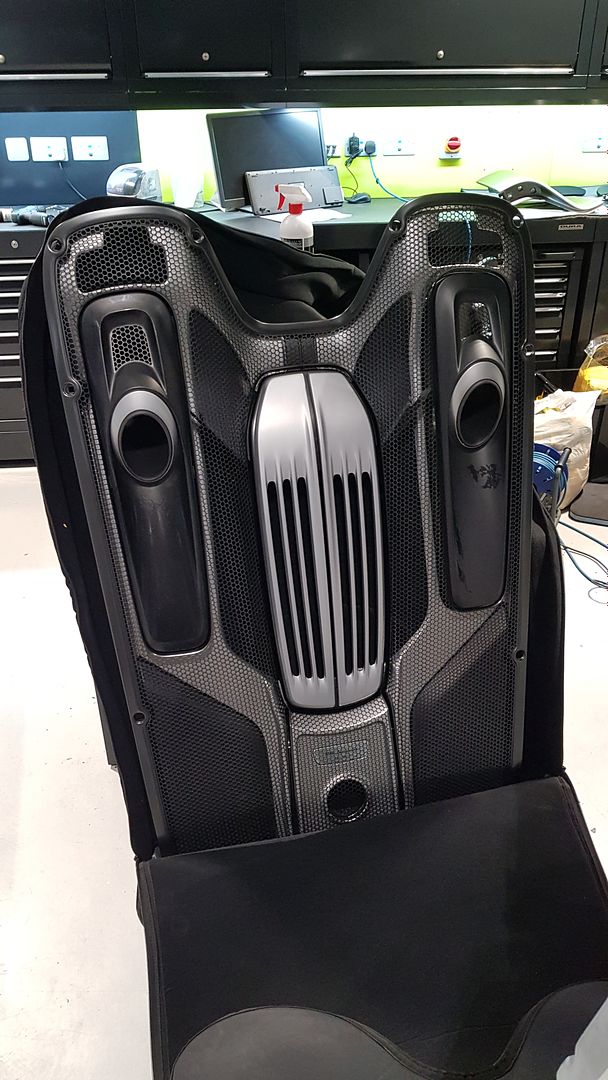
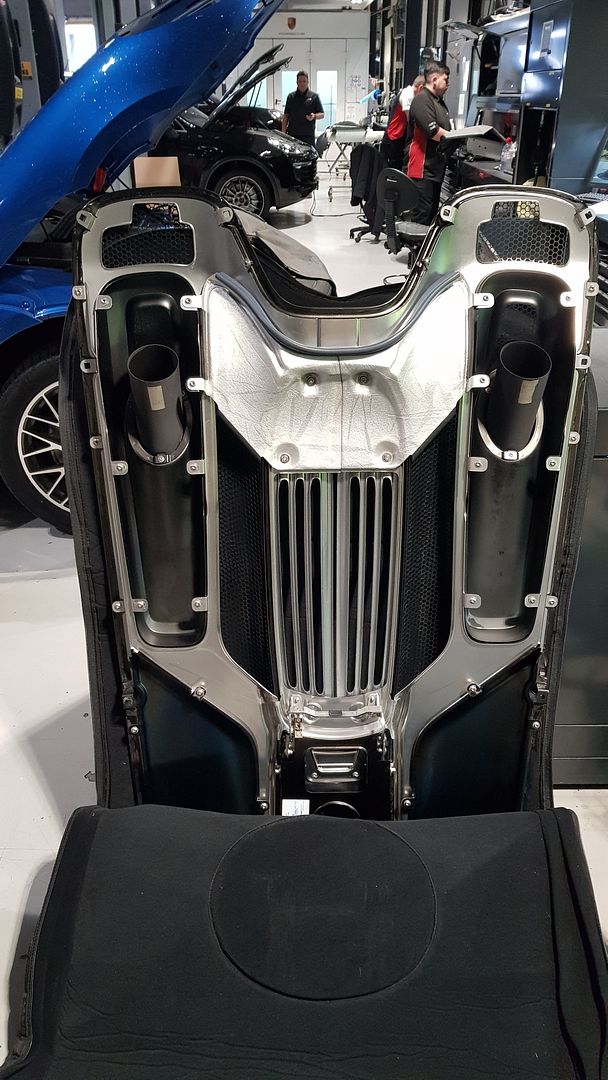

It is worth adding that the hexagonal mesh on the engine cover is very cool. Rather than stamp out the hexagonal holes on a flat piece of metal (which would mean the hexagonal shapes are distorted when bent), the metal is first shaped and then the holes are cut by laser. This means they are all geometrically perfect. It also means the cover is incredibly expensive to replace!
The 4.6 litre. LMP2 V8 engine engine sits incredibly low in the tub. It is incredibly light at c. 135kg.


Coil packs are replaced, along with spark plugs.

The underside of the engine was remarkably clean, being effectively sealed underneath by a carbon fibre panel.


Unlike the CGT, the suspension is outboard, not inboard, due to packaging constraints. It is still a work of art though.

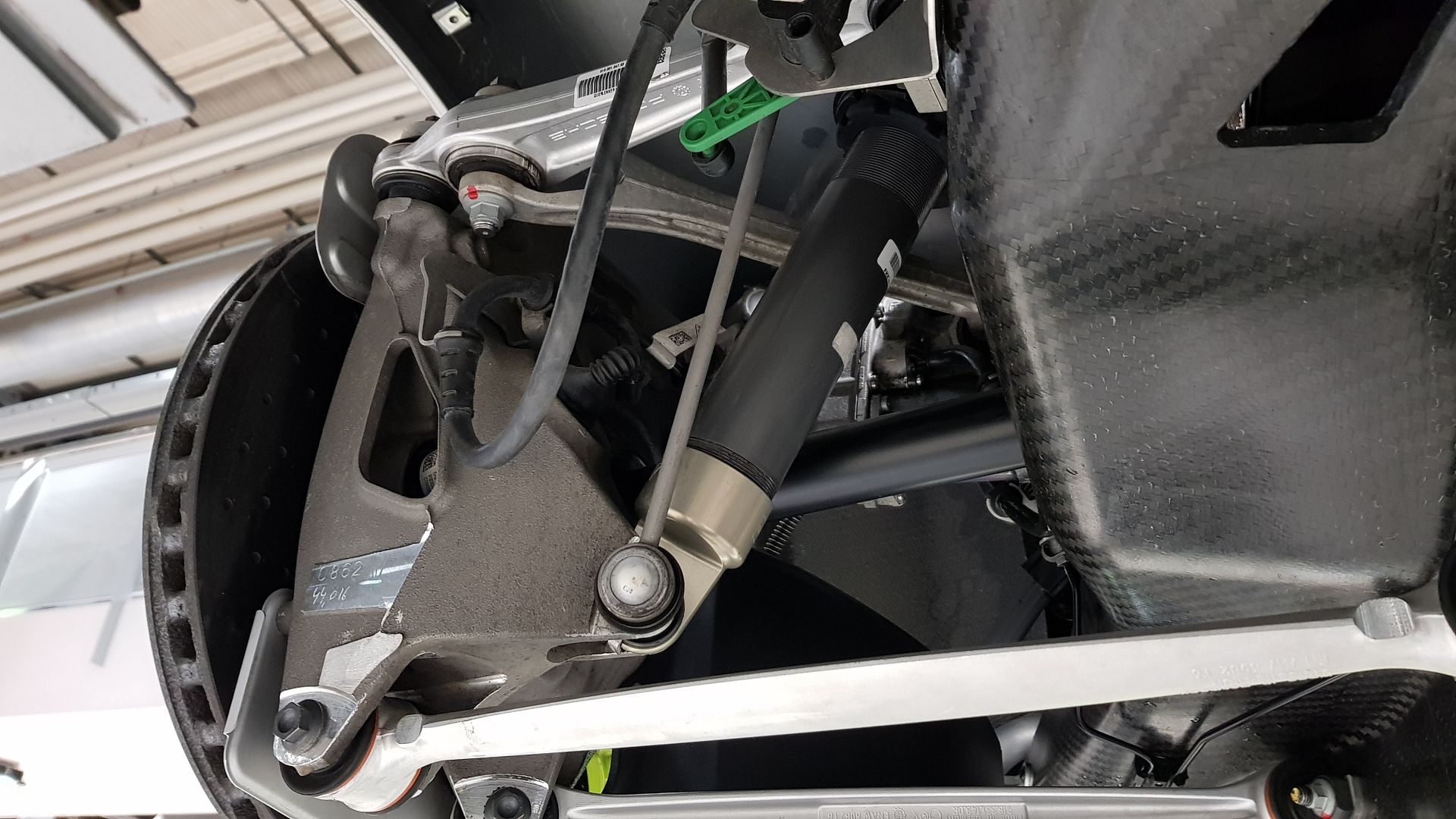

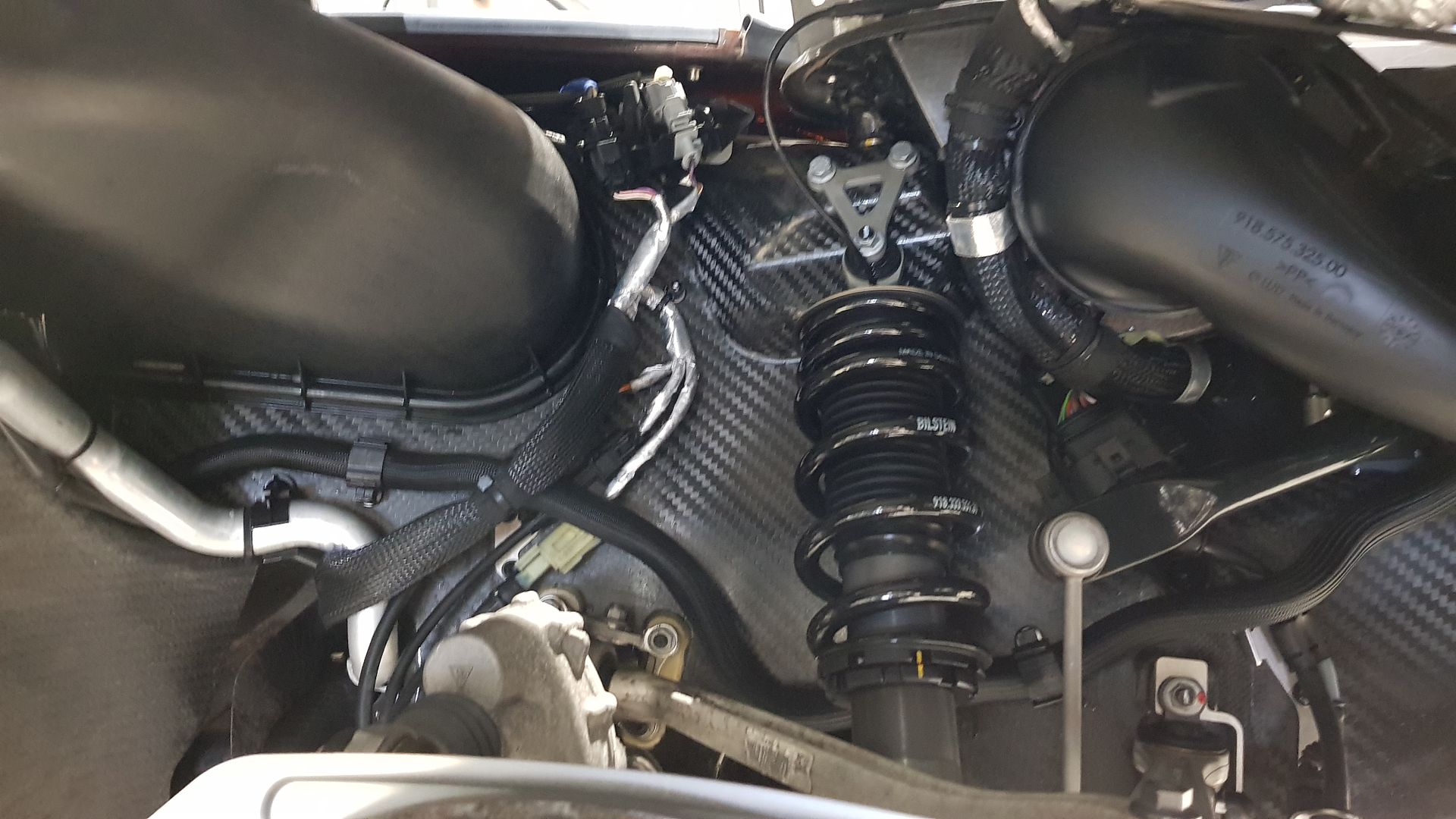
The brakes look almost brand new. 0.5g of braking is generated by the e-motors, so the hydraulic brakes scarcely get used on the public road!


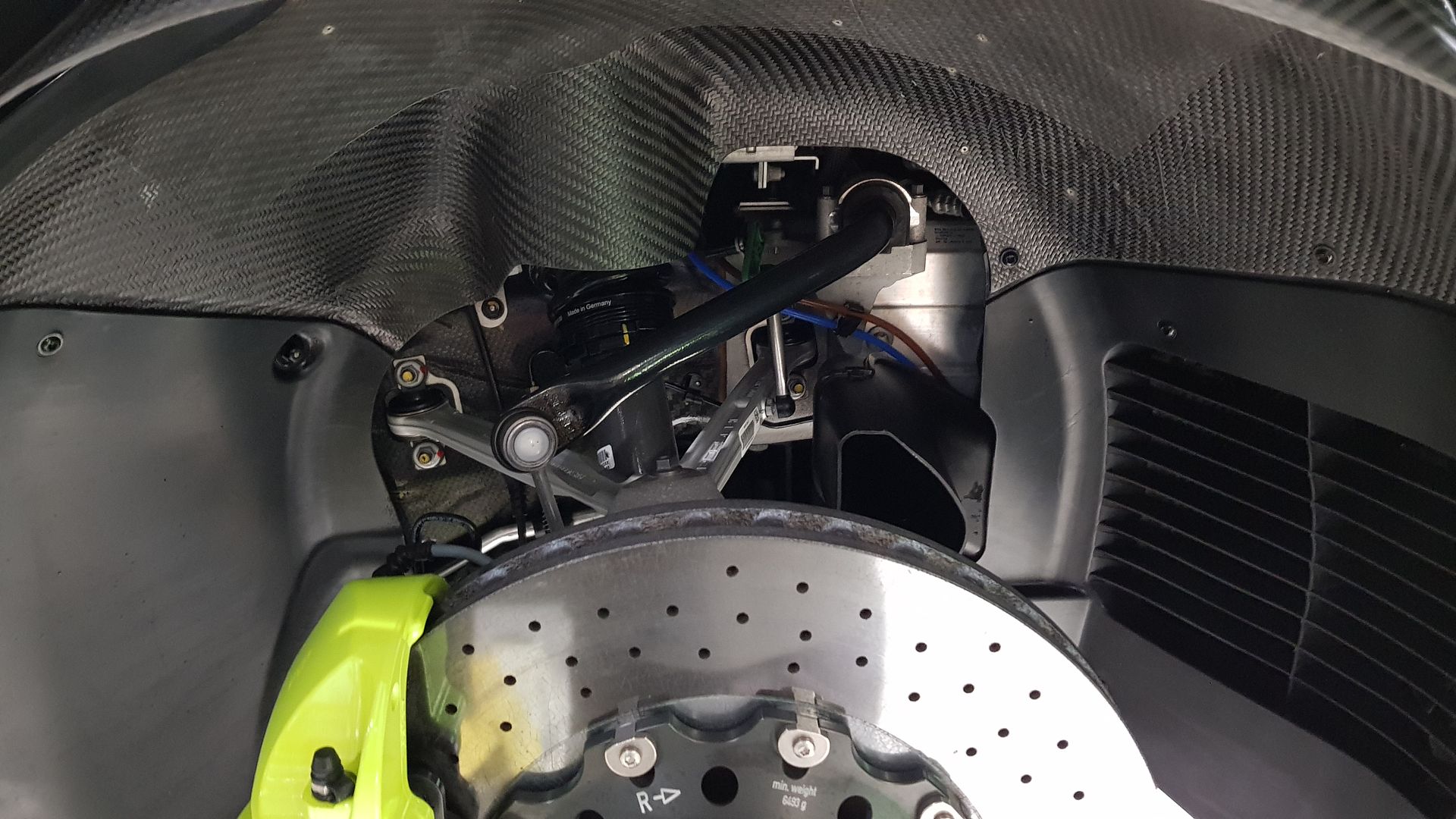
The CGT is a simple car. The 918 is not!




The air filter forms part of the rear carbon structure.

Once again, Richard cleaned up all the carbon parts that are usually hidden away.
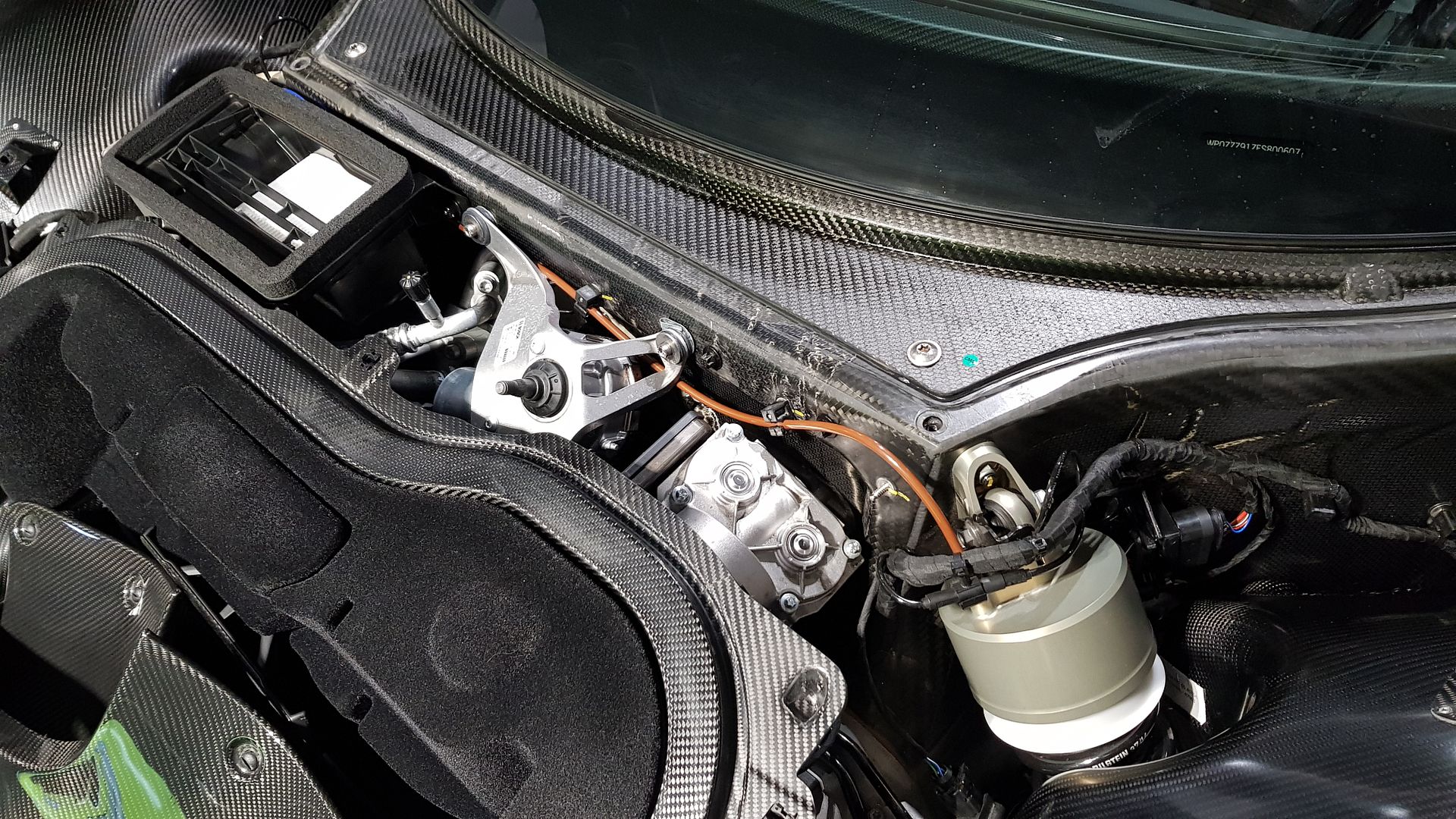
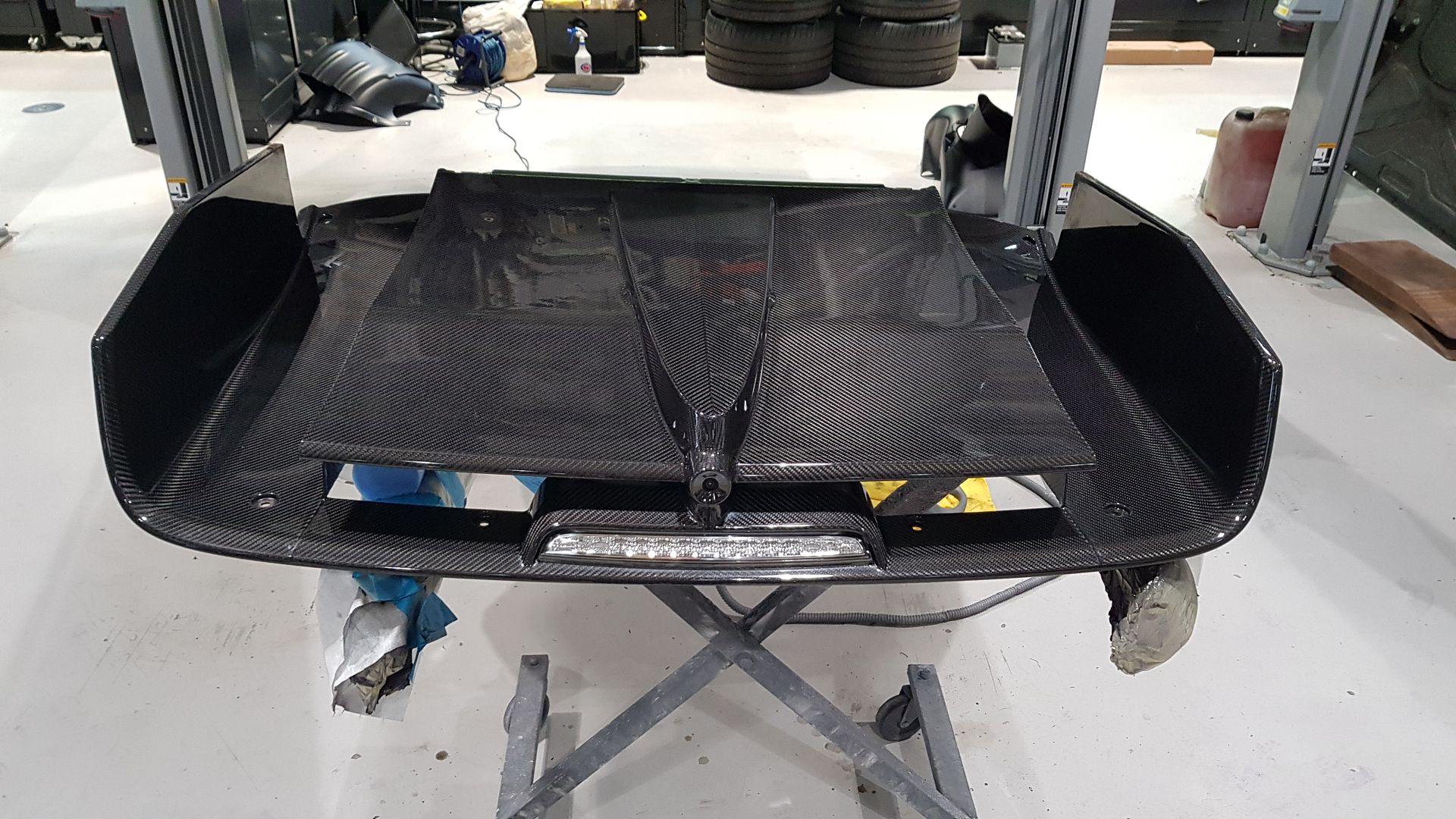
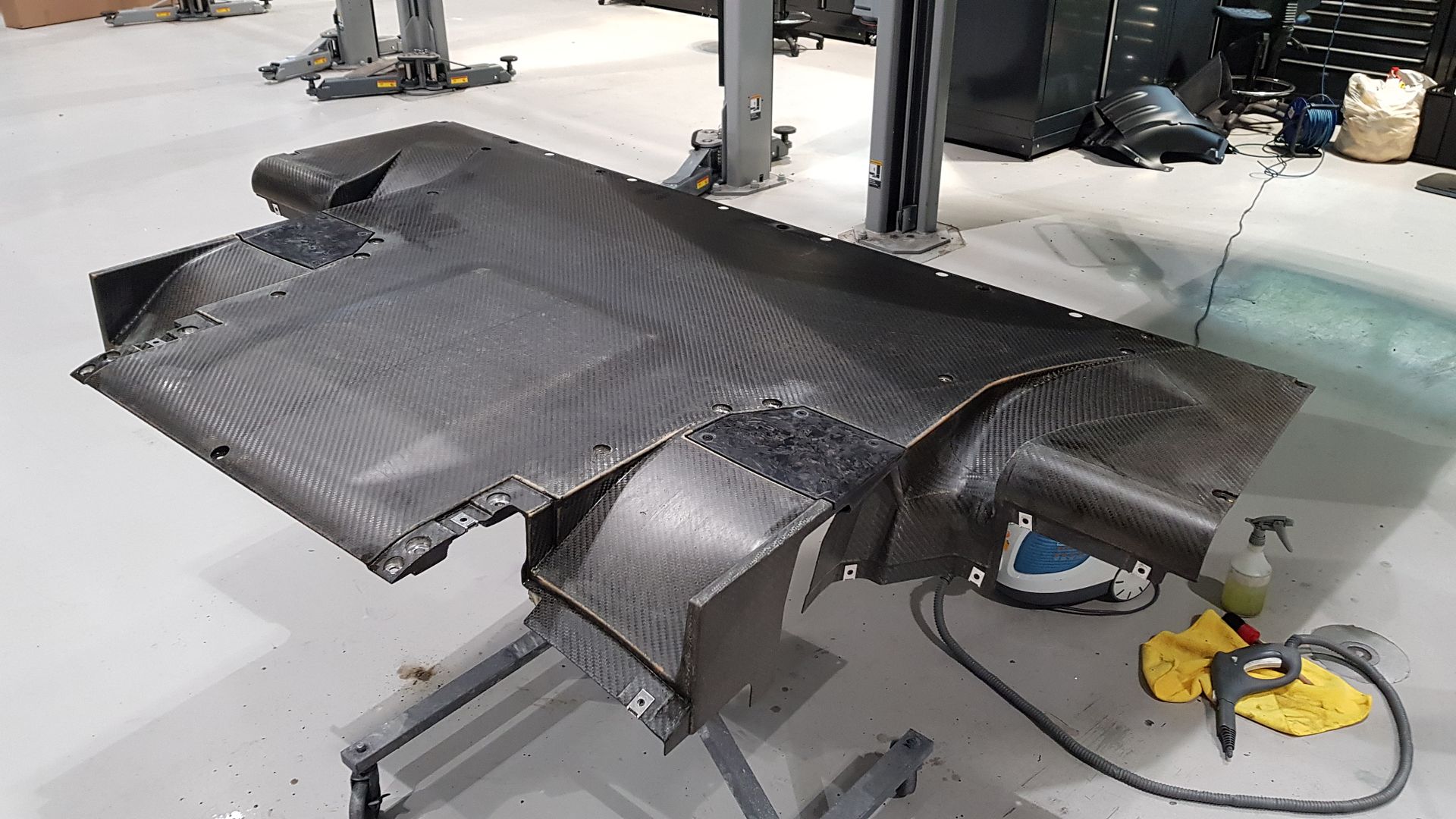
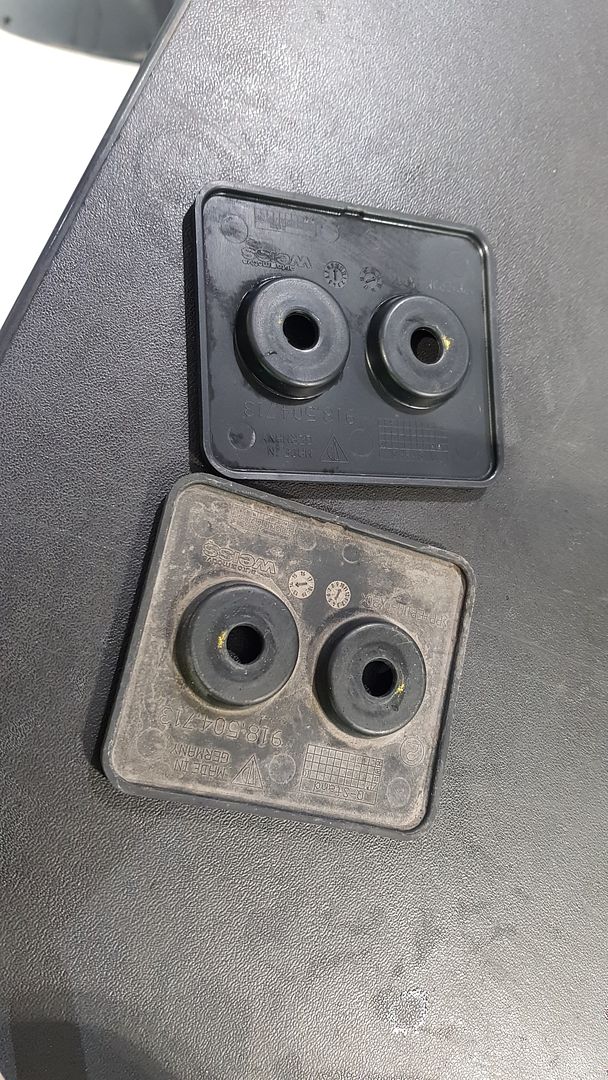

And also re-coated the wheels.
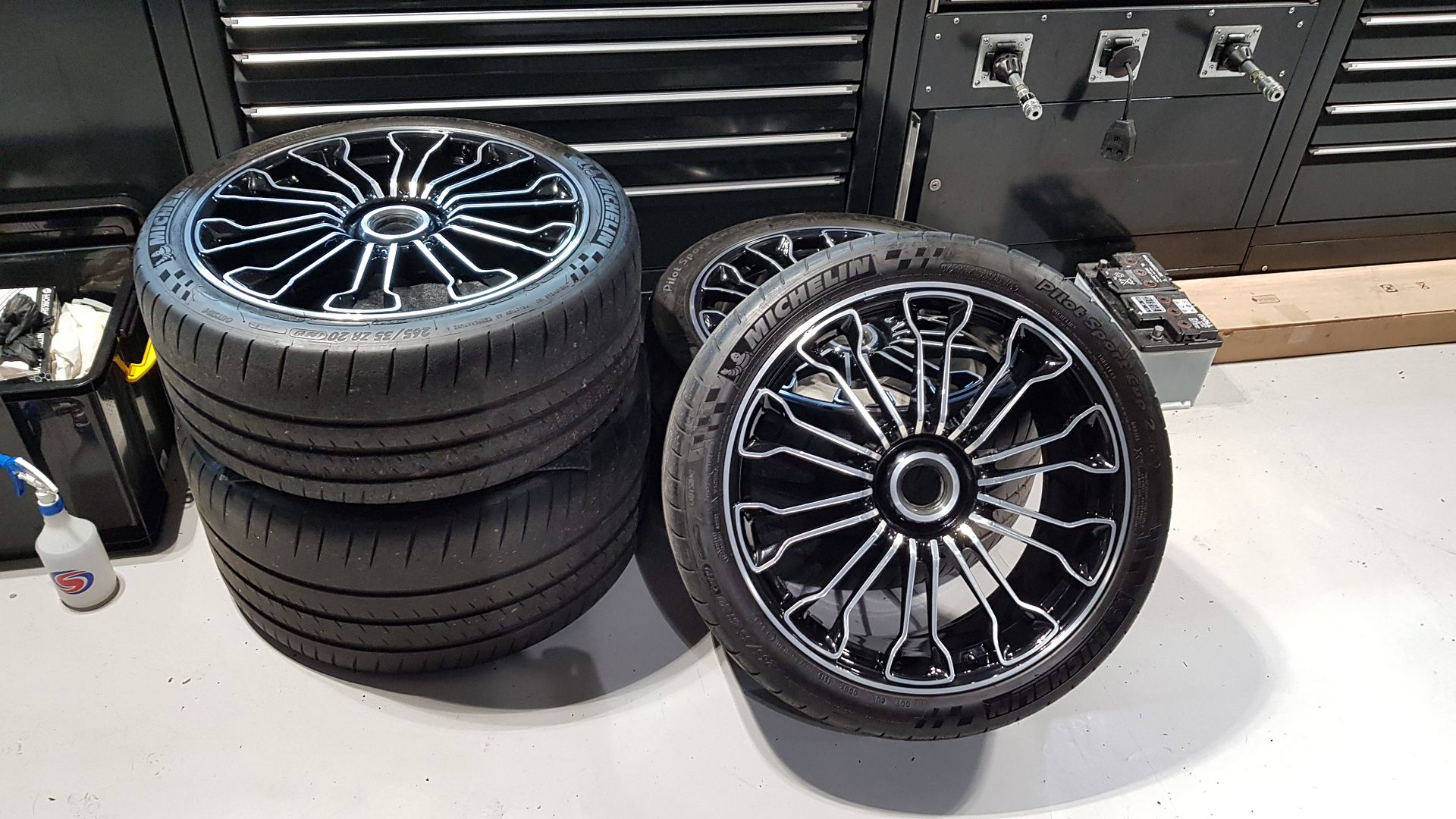
The underside of the car hides some active aero parts. The two central fins in carbon do take a battering.
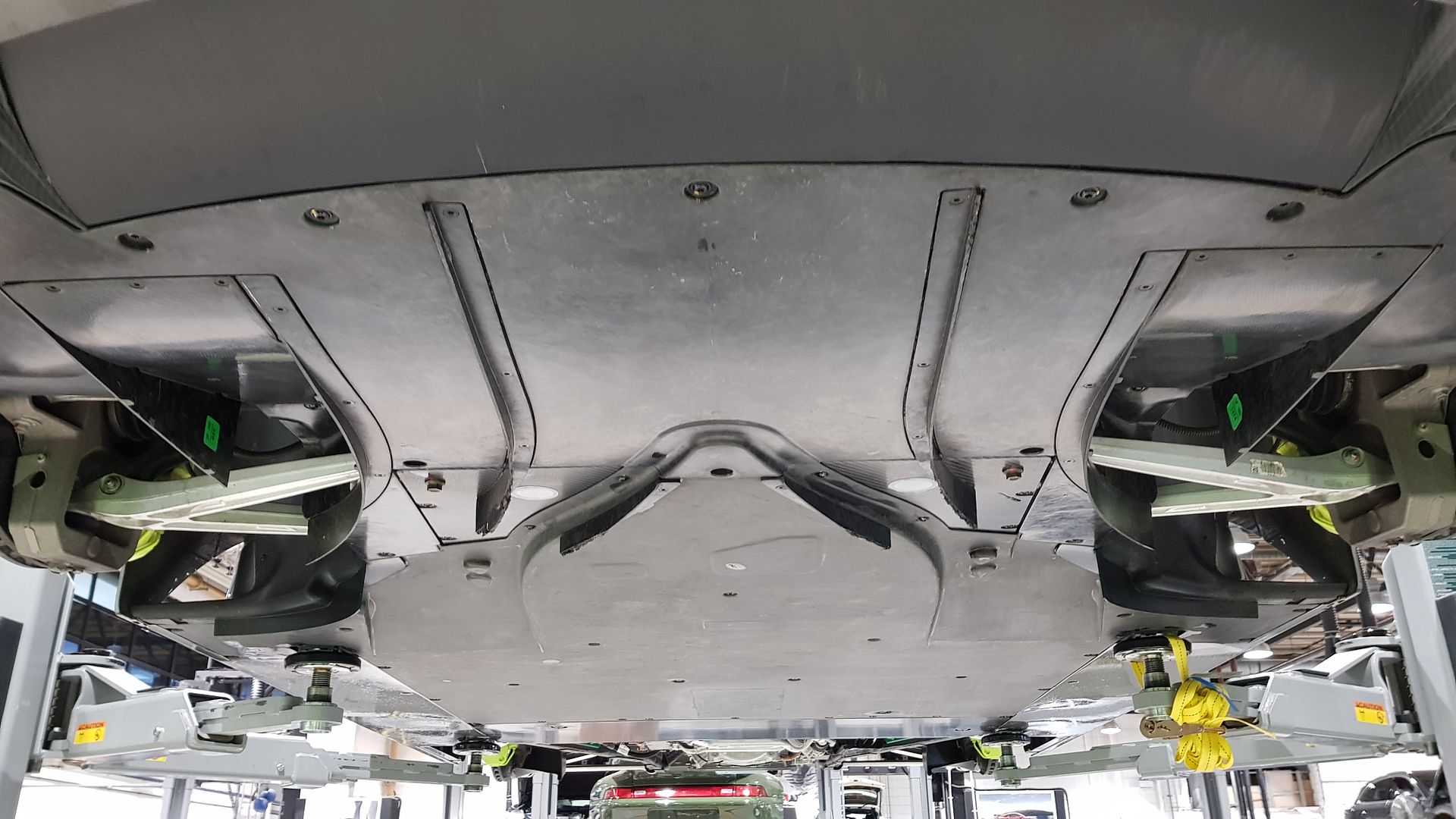
The car is back with me now, so if I can find some dry weather it will be out for a run this bank holiday weekend!

Once again, I hope you enjoyed reading.
For this service, the engine does not need to come out. But still a significant proportion of the car is dismantled, and once again I asked Richard at Refined Detail to detail the car whilst it was in a state of undress!
I've driven around 8,000 miles in the car so far, and had many fantastic adventures, from a trip to Le Mans, to driving it around the Nurburgring, to taking part in a 918 Spyder sport driving school in Portimao (in Porsche's cars). As PHers will know, it is a very different car to the CGT, despite sharing a fundamentally similar twin monocoque structure.
Here is the car on a trip to the 'Ring:

En route to Le Mans:

And next to its elder brother:

So, onto the pictures of the service. Of course the first thing to mention is that great care is required around all the electrical components. Porsche Reading rightly take all that very seriously. Helpfully, all the high tension areas are clearly visible with orange cables.

The engine cover and exhaust system is removed.




It is worth adding that the hexagonal mesh on the engine cover is very cool. Rather than stamp out the hexagonal holes on a flat piece of metal (which would mean the hexagonal shapes are distorted when bent), the metal is first shaped and then the holes are cut by laser. This means they are all geometrically perfect. It also means the cover is incredibly expensive to replace!
The 4.6 litre. LMP2 V8 engine engine sits incredibly low in the tub. It is incredibly light at c. 135kg.


Coil packs are replaced, along with spark plugs.

The underside of the engine was remarkably clean, being effectively sealed underneath by a carbon fibre panel.


Unlike the CGT, the suspension is outboard, not inboard, due to packaging constraints. It is still a work of art though.




The brakes look almost brand new. 0.5g of braking is generated by the e-motors, so the hydraulic brakes scarcely get used on the public road!



The CGT is a simple car. The 918 is not!




The air filter forms part of the rear carbon structure.

Once again, Richard cleaned up all the carbon parts that are usually hidden away.





And also re-coated the wheels.

The underside of the car hides some active aero parts. The two central fins in carbon do take a battering.

The car is back with me now, so if I can find some dry weather it will be out for a run this bank holiday weekend!

Once again, I hope you enjoyed reading.
Edited by stefan1 on Saturday 4th May 20:25
RSVP911 said:
Thanks for doing this - I have used it to gain verbal agreement that I can buy one of these if I win the Euro Millions.
It really is an amazing example of perfect form & function.
Unfair question; but if you had to choose one to keep, would it be the 918 or the CGT (I realise this may be akin to asking you which one of your “kids” you’d throw over the cliffs edge if you had to - so apologies for this)

Thanks. I really enjoy writing up these services and sharing the pictures. It really is an amazing example of perfect form & function.
Unfair question; but if you had to choose one to keep, would it be the 918 or the CGT (I realise this may be akin to asking you which one of your “kids” you’d throw over the cliffs edge if you had to - so apologies for this)

Edited by RSVP911 on Sunday 5th May 10:59
As to your very hard question, if I had to choose I would keep the CGT. Although vastly simpler, the depth of engineering is still fantastic and above all it is just more fun to drive.
I took the CGT out for a long drive over the Easter Weekend. It had been a long while since I had driven it properly, given the winter and then the long time the car was with Porsche Reading. It still has the power to shock with its performance and it rewards the driver like few others.
What was interesting is how relatively basic the damping feels compared to modern Porsches. It works, but in a pretty narrow range, whereas today we are used to the voodoo of track focused cars like a GT3 also being incredibly supple on a B-road. The 918 is similarly blessed with a far wider range of operation, but, for that focused drive the CGT’s (relative) shortcomings, which mean you - the driver - have to read the cambers and ridges in the road, simply add to the pleasure.
All that said, the nature of the 918’s performance, with the feeling that you have a 10 litre V8 under the bonnet at low revs, replaced by a scintillating howl from the top mounted exhausts of a pure bred LMP2 race engine at 9,150rpm is pretty special. The trouble it’s hard to enjoy the performance on the public road!
So the CGT, with its simple focus on driving pleasure, is the one for me,
lowndes said:
Thank you for taking the trouble to post, I really enjoyed that. My word it looks complicated and though its obvious really it is nevertheless fascinating to see the exhausts coming out of the top of the engine.
A couple of questions.
Are the centre locks handed?
I see you can get 0.5g braking from the e motors. As an electric motor has max torque at zero rpm I wonder how they modulate the braking effect to give more gentle retardation?
Yes, the centre locks are handed. On the Weissach cars, they have red and blue wheel nuts similar to those on the CGT. A couple of questions.
Are the centre locks handed?
I see you can get 0.5g braking from the e motors. As an electric motor has max torque at zero rpm I wonder how they modulate the braking effect to give more gentle retardation?
Good question on the e-braking. As you slow to a rest, the e-braking force is reduced and the hydraulic brakes come in. It does make braking to a rest challenging, as you can feel the change through the brake pedal and it makes the pedal hard to modulate for a smooth stop. You can also hear the pads on the rotors (a “shhhhshh” sound). Many people commented on the brake pedal feel when the car came out - when really pressing on (e.g. on track) it feels great, but it isn’t perfect when braking gently for this reason.
Gassing Station | 911/Carrera GT | Top of Page | What's New | My Stuff




